Find the answer to your website question
Here's a run-through of some common questions our users have when using websites with Firefish.
Quick jump to:
- How do I link a Basic Portal Website
- What are header tags?
- Can I use more than one H1 tag?
- I'm receiving spam through my comments/forms. What should I do?
- Where can I find images for my website?
- Can I use spell checkers with Firefish?
- How do I clearing my browsing data?
- Why am I seeing a black screen (and I have Kaspersky installed)?
- What is a Subdomain?
- How do I create a subdomain and what should it be called?
- Does a subdomain affect SEO?
- Google Analytics Cross Domain Tracking
How do I link a Basic Portal to a website?
If you're on Firefish Basic, you'll need to link your ad portal to your main website to display your jobs. We'll let you know when your ad portal is ready and provide the URL [yourcompanyname.firefishsoftware.com]
To link to the Ad Portal within your website, you'll need to change your current vacancies page to be a 'Menu URL Link', which lets you create a link to an external page.
The method behind this varies depending on your website provider. We've included a few links below to a couple of the most popular web providers that our clients are using. If you're using another provider or struggling with instructions your website provider should be able to offer support.
Word Press: https://wordpress.org/plugins/page-links-to/
GoDaddy: https://uk.godaddy.com/help/changing-your-sites-navigation-7676
123-Reg: https://www.123-reg.co.uk/support/
What are Header Tags?
Header tags are used to create headings on pages and these will provide structure to your content. Header tags have a top-down hierarchy (H1-H6) and if used correctly, they can boost your SEO rankings.
Header 1 tags are used to format the title of a page or post – this will usually be the largest text which stands out. These are the most important header tags of a page and it’s the highest-level tag and shows what your page is about.
Having strong H1 tags can improve your search engine ranking when used correctly and in line with other onsite SEO techniques.
Can I use more than one H1 tag?
We would always advise to only use one H1 tag, and then mark subheadings on the page using H2 & H3 tags.
You can see the difference of H1 & H2 Tags on this page! The page title is H1 and "What are header tags..." is H2.
I'm receiving spam through my comments/forms. What should I do?
If you're receiving comments that look like SPAM on your blogs or emails via your Contact or Request a Vacancy forms, you might want to think about adding a CAPTCHA to block prevent this.
A CAPTCHA is a step which can be added to a form to distinguish between a human and a Robot/Machine.
Just get in touch with Support and we'll switch the CAPTCHA on for all forms across your website (excluding your registration/applications forms):
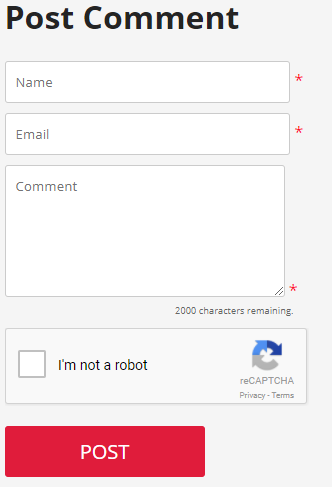
I'm receiving spam through Registrations and Advert Applications. What should I do?
If you're receiving registrations or advert applications that look like spam, you might want to think about adding a CAPTCHA to prevent this from happening.
A CAPTCHA is a step which can be added to any form to distinguish between a human and a Robot/Machine.
To enable the CAPTCHA, you can do this as a Super User for Enterprise and Professional in Website > Registration Plugin. From there go to the Web Registration or Advert Application section and tick the CAPTCHA setting.
For Basic clients, just get in touch with Support and we'll switch the CAPTCHA on for your advert applications.
Web Registration CAPTCHA Setting Location:
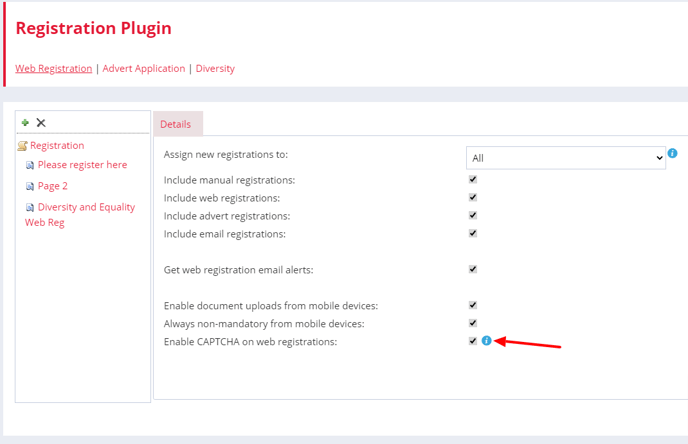
Advert Application CAPTCHA Setting Location:
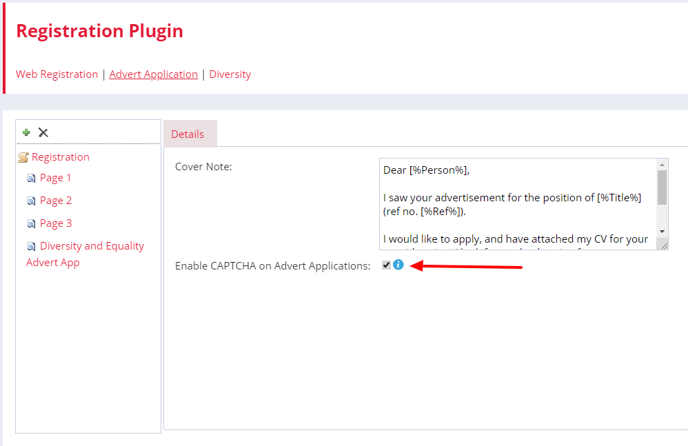
Where can I find images for my website?
Free Images
You'll find plenty of free images on sites like Flickr and freedigitalphotos.net
Be sure and pay attention to the attribution licences, as almost all free photos require you to provide an acknowledgement of the photographer/image creator. Failing to do so could lead to expenses you hadn't budgeted for!
Buying Images
iStock, Getty Images and Shutterstock are just a few of the sites that have lots of photos and illustrations available to purchase.
Once you buy them, they are yours! Meaning no attribution licenses to worry about.
Create your own
Of course, you also have the option to create your own graphics for your website. Here are a few great design tools that can help you do this - and are totally free!
If you're going down this route, make sure they look professional or fit with the look you're going for. If you're not so great at creating graphics or taking photos then hire a photographer or designer to do this part for you.
Why are my images so big on mobile?
Web Content pages within Firefish are fully responsive, but sometimes an image may not respond if it has a set width and/or height.
When you upload an image onto a content page, it will be given a set width and height by default - this is determined by the original size of the image you choose to upload.
To make your image responsive, you simply need to set the image size to auto. To do this, right click on your image and click on Image Properties;
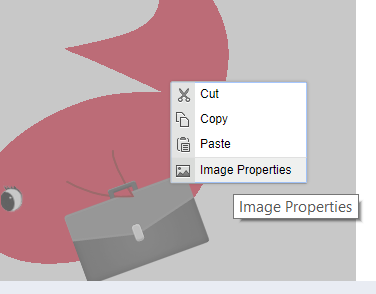
Next, click on the Advanced tab then replace the Style field within the following:
max-width: 100%
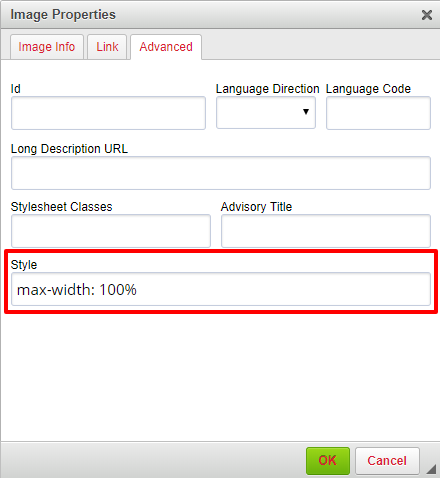
Remember to click OK then Save on your content page before closing;
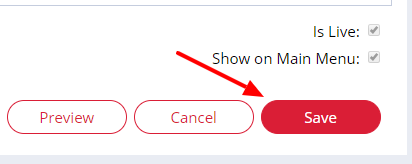
Why are images on my website taking so long to load?
The format, dimension, size and resolution of an image can have an impact on the speed in which the image and page loads. When adding images to your website, we recommend that the images are optimised.
Image optimisation is a process of delivering high-quality images in the correct format, dimension, size and resolution while keeping the smallest possible size.
You can easily and quickly optimise an image using this useful tool: https://imagecompressor.com/
Once your image is optimised, just upload to Firefish as normal.
Can I use spell checkers with Firefish?
As Firefish is a web based platform, there are spell checking tools you can use on various web browsers to make sure everything you write appears correctly for candidates and clients.
Here are some options...
Google Chrome Spell Checker
To turn on spell checking in Google Chrome, go the menu icon and click Settings.
At the bottom of the Settings page, click on Advanced to show more and scroll down to the Languages section where you'll see a Spell check option:
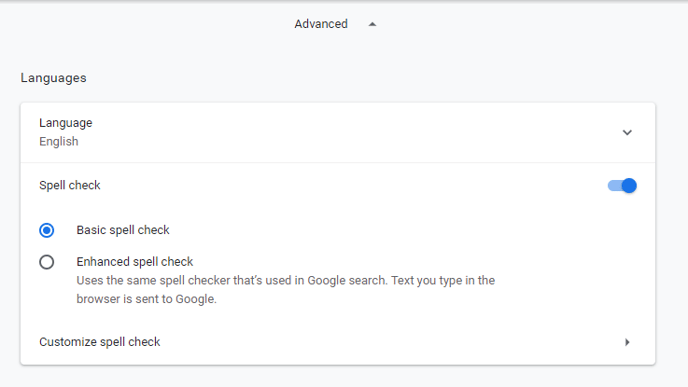
Make sure the correct language is selected and check the right-hand column to make sure the language can be used for spell checking.
To view suggestions for incorrectly spelled words; hold CTRL and right-click on the word.
Grammarly spell checker plugin
You can also use the Grammarly extension that will help with all your notes, emails, adverts etc. within Firefish: https://www.grammarly.com
Grammarly is compatible with:
Google Chrome
Mozilla Firefox
Microsoft Edge
How do I clearing my browsing data?
From time to time, you may want to delete some of your browser data, whether that’s your cache, cookies, history, or everything!
Clearing your cache is a good idea when you know that there should have been updates released on your Firefish but you can’t see them.
Chrome
Start by clicking the menu button on the top right of the Chrome browser, then select History.
This will open a new tab called History. Click on Clear browsing data.
This brings up a new window which will allow you to select what kind of data to delete (using the check boxes) and how recently you want to clear it from (using the drop-down). When you are happy with your selections, click Clear browsing data to action. Depending on how much data there is, this could take a few minutes to clear.
You can also press the Ctrl and F5 keys on your keyboard at the same time to clear the cache.
Internet Explorer
Open the Tools menu by clicking on the cog at the top right of Internet Explorer. Go to Safety > Delete browsing history…
This brings up a pop-up window where you can choose what data to delete. Once you’re happy with your selections, click Delete to finish. Depending on how much data there is, this could take a few minutes.
Firefox
Click on the menu button at the top right-hand side of the Firefox browser and click on History.
Another panel will appear from the right, where you should select Clear Recent History…
This brings up a pop-up window where you can select a time range to clear from using the drop-down. Click on the arrow to show Details and select the data you wish to clear. Default selections are Browsing & Download History, Cookies, Cache and Active Logins.
You should also select Offline Website Data to make sure everything is fresh. When you’re ready, click Clear Now to finish. Depending on how much data there is, this could take a few minutes.
Why am I seeing a black screen (and I have Kaspersky installed)?
Kaspersky is a security and anti-virus software. One of it's functions - Anti-Banner*, has on some occasions been shown to block the following Firefish pages:
-
Advert Dashboard
-
Advert Details
Advert Dashboard
Advert Details
You will be able to tell if this is the case for you when you try to navigate to these pages and see only a black screen displayed and the browser tab displays "Dashboard (1x1)"
*Anti-Banner is not included in the basic Kaspersky Anti-Virus products but is included with Kaspersky Internet Security and Kaspersky Total Security products.
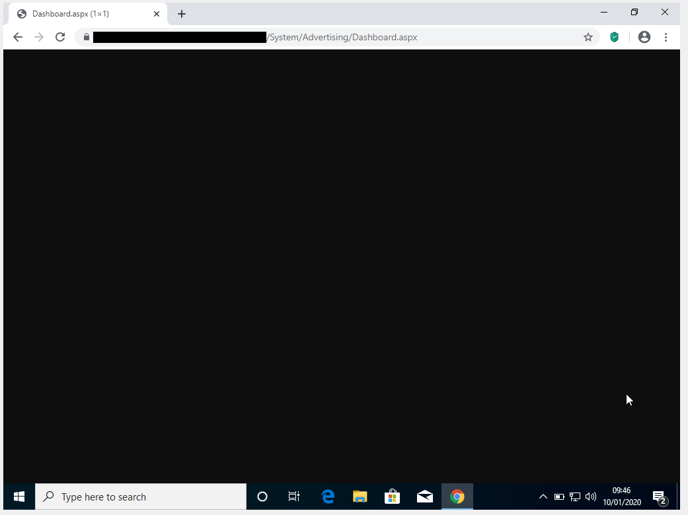
If you are experiencing this issue we recommend adding your Firefish Jobs site to the Kaspersky Anti-Banner "list of websites with allowed banners." You can do this by following these steps:
These steps are a guide only and may be different for different versions. For exact steps relating to your version of Kaspersky we recommend contacting them directly.
Firstly select Settings>Protection>Anti-Banner:
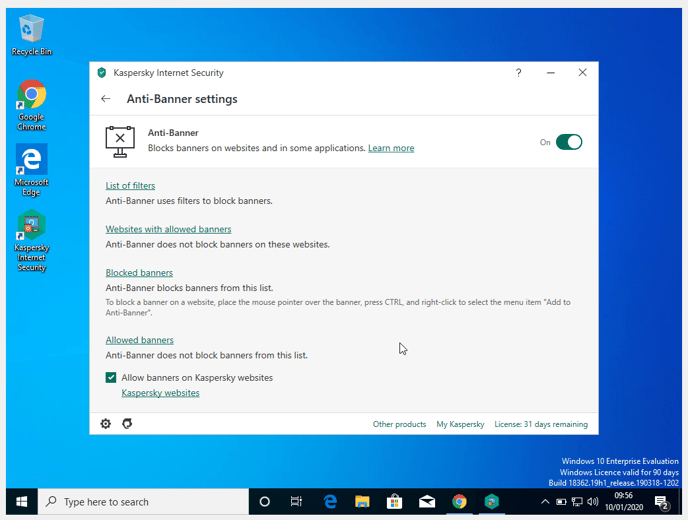
Within Anti-Banner settings, select Websites with allowed banners and select Add. You can now enter your website URL:
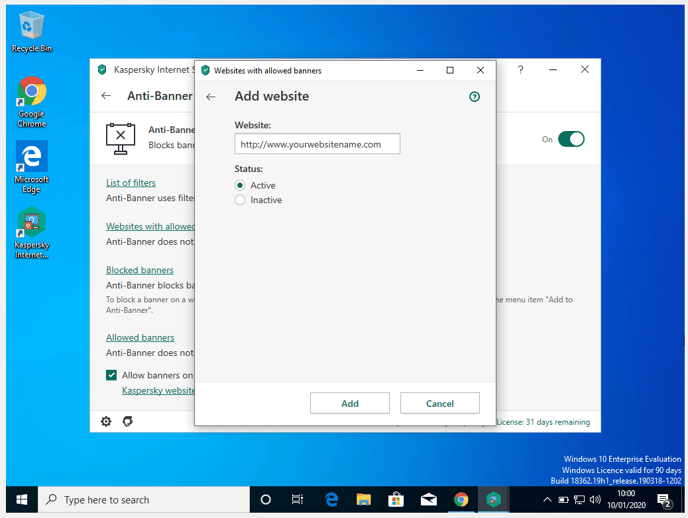
Ensure that the Status is set to Active and click Add. You will now see your website appearing on the Websites with allowed banners list:
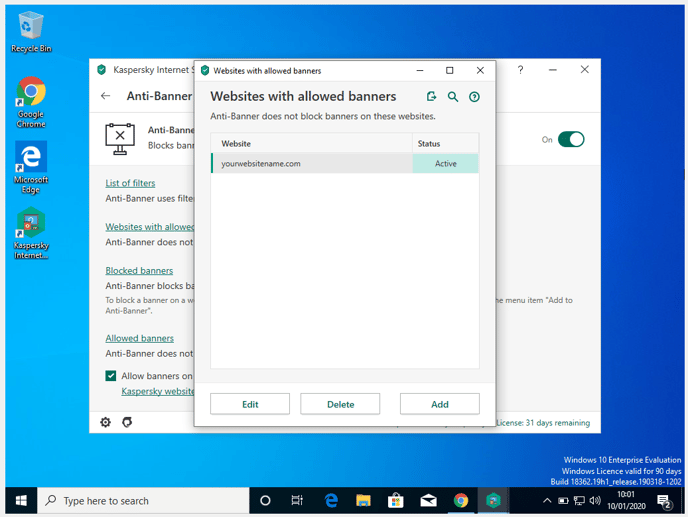
Finally, check that you have Anti-Banner switched on:
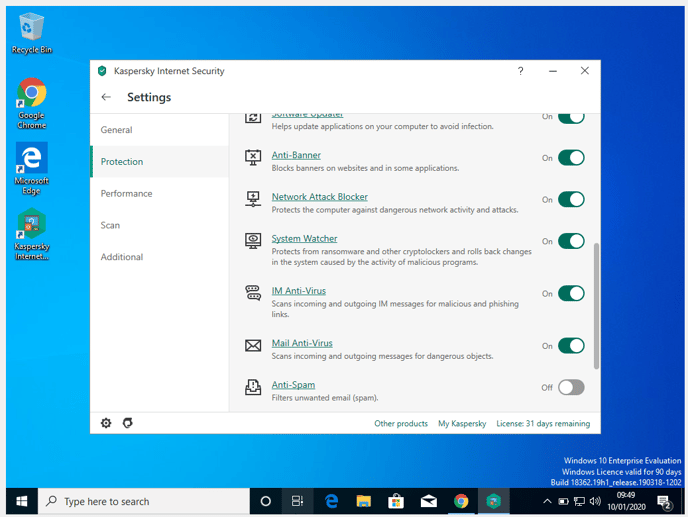
You should now be able to navigate to the affected pages and view them with no further issues.
What Is A Subdomain?
On a blended site, a subdomain allows the vacancies, register and login pages to seamlessly integrate into your current website.
A subdomain is a folder or extension of your existing URL - www.companyname.com would have a subdomain like jobs.companyname.com . It allows all the Firefish hosted pages to be linked through your existing URL domain and provides all the great page optimisation that your jobs will create to be attributed to this domain.
Is a subdomain a second website?
No, a subdomain is a part of your existing domain and as it’s linked to your main website. The key here is it will not have www before it, it is an extension of your existing www.
How do I create a subdomain?
You’ll create a subdomain on the portal that you manage your domain address ie your www.companyname.com. This could be GoDaddy, 1&1, 123 Reg or Rackspace for example. Each www. domain that you own has the ability to simply add a subdomain to it. The exact method of doing this may vary depending on which domain manager you are using; we’ve included some links to help guides on common registrars below:
Using a different domain registrar to the ones we've mentioned? Run a quick Google search for 'how to create a subdomain on domain registrar name' or contact their support team.
What should I call the subdomain?
The subdomain can have any name but we would recommend calling it Jobs, Vacancies or Careers - this means the subdomains URL would be jobs.companyname.com for example.
Does A Subdomain Affect SEO?
Subdomains and subdirectories, a page on your main site, are seen as the same by a search engine and the only difference in rankings are based on content and keywords.
Subdomains and subdirectories are treated equally by search engines crawlers, meaning that Google and other search engines will recognise subdomains as part of your main website and will rank these sites together as a whole rather than individual sites.
In fact, depending what it is used for, the subdomains could rank higher than subdirectory pages, for example, jobs.companyname.com would rank higher than www.companyname.com/first-level/jobs. This is because the closer the keywords in the URL are to the root domain, the more it would mean for search engines.
This means that having your jobs page hosted on a subdomain will have no adverse effects on your SEO rankings – we even host our own blog page on a subdomain - https://blog.firefishsoftware.com/
Google Analytics Cross Domain Tracking
If you're on a blended site, you'll have set up a subdomain for your jobs page, you should use cross-domain tracking to ensure you get the most accurate stats for your website.
How does tracking work with different subdomains?
Google Analytics treats different subdomains as their own website, meaning that when a user moves between subdomains without cross-domain tracking, they are being registered as a new user to your site rather than tracking them as the same person. This doesn’t mean that subdomains are bad to use, it just means that you need to let Google know that you are using them, this is where cross-domain tracking comes in.
An example of this would be a client going from www.firefishsoftware.com/jobs to jobs.firefishsoftware.com. If cross-domain tracking is not set up, this will make google register the same person as a new user on jobs.firefishsoftware.com as well as registering a user drop off on www.firefishsoftware.com/jobs. This will make it look like you have an inflated number of users entering your site which isn't accurate.
Why do you need cross-domain tracking?
Cross-domain tracking lets Google Analytics know that the two domains are connected and are in fact the same website. This will allow Google to present you a more accurate overview of the hits your site is getting and provide you with more useful information surrounding your current user base. They will properly track user paths through your domains and allow you to identify the points of your site that are getting the most traffic. It will also create funnels that utilise these routes and use them to your advantage, allowing you to guide users to where you want them.
How will this help with my tracking?
Cross-domain tracking can help you to see how users are interacting with your site and what paths they are taking to get to each endpoint of your site (for example, applying for a job or getting in contact with you). This will also allow you to gain a better overview of the correct amount of daily traffic which can help you to identify goals (for example, how to increase traffic). It will also give a clearer picture of the points/pages where users are leaving your site from. This can help you understand why they are leaving at that point and try to improve it to stop this from happening.
What will be the difference and what will I see in Google Analytics?
After you’ve set up cross-domain traffic, you might notice a drop in the traffic within your Google Analytics account. This is not a bad thing, in fact, it indicates that you are tracking the traffic flowing through your site and across your domains more accurately. You will also notice a lot fewer drop-offs as, without cross-domain tracking, any user accessing your website will be showing as a drop off from your main domain and a new hit on your subdomain. You can also see in the mapping of a user’s flow through your site the pages they are visiting across the two domains instead of these being separate.
How can I set this up?
Google provides the best documentation as to how to implement cross-domain tracking to your websites. You can find the main article for this here.
If you are using google tag manager this will need to be set up slightly differently. Please see Google’s documentation on how to set this up here.
